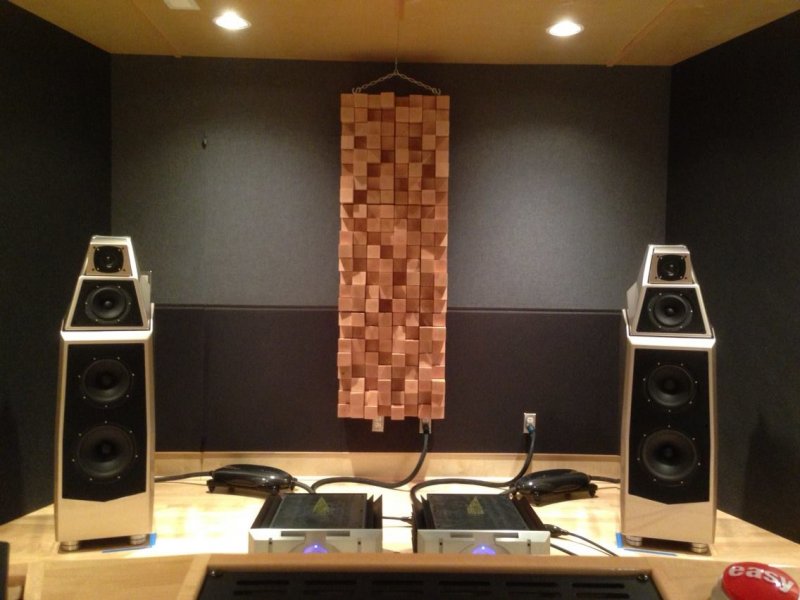where in the room will you employ the 1D quadratic diffuser(s)? What is the prime number and slot width you intend to use for the diffuser design? Will you use a single large prime, N31 and 2" well width for example to build a single 60" diffuser? Or a modulation of several identical N13 or N17 diffusers? If the latter, you must account for the additional mounting depth of the diffusers which protrude furthest due to the modulation.
Well, initially i was thinking front wall and rear wall. The rear wall is compromised by double doors and the piano so was thinking 2 x N11 and 1 N13 up and absorption panel below mostly behind piano.
place another QRD on the final 4-5 feet of both rear sidewalls, again adjacent to the corner bass trapping. The long delayed and thoroughly de-correlated return off the diffusers would create a lovely sense of spaciousness at the MLP.
Loving this suggestion. It may not work out exactly like that due to a window one side (not floor to ceiling) and shelving unit the other. But a good solution to think on and develop given the compromised nature of the rear wall.
On the front wall in a triangulated pattern, N31 in the center slightly elevated from the floor, allowing for an existing artwork above, that will go eventually to be replaced with another N31. Then left and right N19's with deep base absorbers below them (thinking the Foley type) that will be behind the speakers.
Only amps in the center on plinths and all other equipment is being moved to the side, replacing Vinyl storage shelf with lower equipment rack allowing more treatment area on the wall. Current listening in plywood boxes for easy access the rest to another room.
A 6" deep ceiling cloud to intercept the primary reflection there. Perhaps some 6-8" deep broadband panels immediately flanking each loudspeaker and on the wall directly behind each speaker as well to address SBIR. If your room response measures somewhat ragged in the upper bass, S(peaker)B(oundary)I(nterference)R(eflection) is the likely culprit. Again assuming I understood your description correctly, That would be a solid start.
I am safer starting slowly with the 3 QRD's, for front and 2 deep broadband absorptive panels. Then the side and rear walls.
I need to be conscious of other members of the household but usually if it improves the music its okay.
See how far I can go before the ceiling cloud. I will let you know
Very must appreciate the Reflective and absorbing nature of your input thank you.
Allot to get excited about there!




